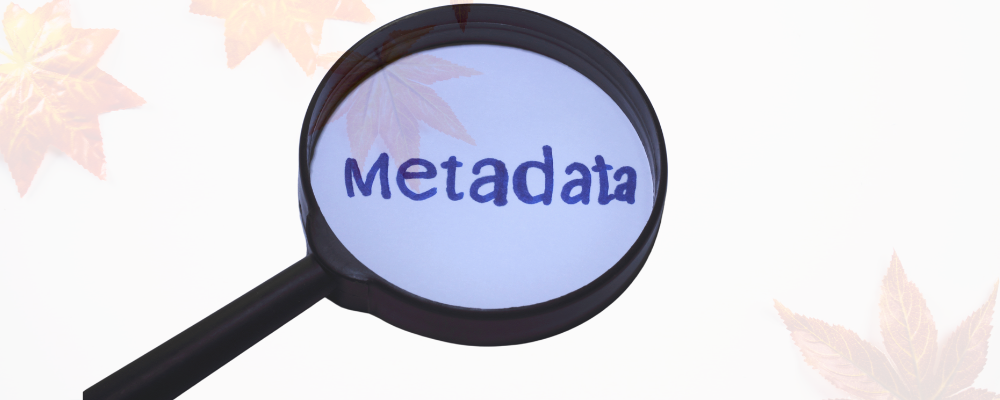Join BookNet Canada Project Manager Monique Mongeon and Marketing & Communications Manager Ainsley Sparkes as they go over book sales and reader behaviour in the Canadian market in 2020.
(Scroll down for a transcript of the conversation.)
Want to make sure you never miss an episode of the podcast? You can subscribe for free on iTunes, Stitcher, Pocket Casts, TuneIn, or SoundCloud.
Further reading/listening
Niche subject explorations on the BookNet blog:
Consumer survey results:
Transcript
Ainsley Sparkes: Welcome to this month’s episode of The BookNet Canada Podcast. I’m your host, Ainsley Sparkes, the marketing & communications manager at BookNet.
As we’re all well aware, 2020 was a difficult year. And the book industry didn’t escape the uncertainty that came with adapting to lockdowns, online orders, and curbside pick ups. If you’re in the industry, you probably know quite well how your publishing house, book store, agency fared, but what about the market overall? And what can we see when we break down print book sales into more granular sections throughout the year?
To shed some light on these questions, we asked BookNet’s very own Monique Mongeon to answer some questions using SalesData, our sales-tracking service for the Canadian English-language trade book market.
So first, can you tell us what happened to print book sales in Canada last year? To start, let's look at how sales fared at the start of physical distancing in March.
Monique Mongeon: Yeah. So, at the start of physical distancing there was a swift drop in sales as physical store locations closed across the country, after March 15, and sales continued dropping very steadily until the lowest sales week of the year, April 5, 2020. Between March 15 and April 5, sales dropped approximately 37% in the all markets.
Ainsley: But that drop didn’t last after we sort of started emerging from our first lockdowns in the spring and early summer is that correct?
Monique: Yeah, that is correct. That 37% drop happened quickly but didn’t remain. After April 5, sales started trending up again, returning close to 2019 sales numbers by June, and by mid-July of 2020 book sales started outpacing 2019 sales. And that trend of selling more than the year previous continued through to early September. So it did seem like book buyers were out in force picking up summer reads toward the late summer and early fall!
Ainsley: Well that’s heartening, but how did the holidays perform?
Monique: So, as everybody knows, the back quarter of the year is always a busy time for book sales, with awards season and holiday shopping in full swing! When we compare 2020 to 2019, it’s pretty interesting, it looks like book buyers got a bit of an earlier start to their holiday shopping in 2020, with sales starting to pick up in the second week of November — about a week or two earlier than the norm, when looking at holiday sales in 2019 and 2018. I know I started my shopping a little earlier than usual this year, so it seems like a lot of us had the same idea!
So, while buyers got started with their shopping earlier than usual, buyers didn’t buy more books over the holiday season than in previous years. Comparing the eight-week holiday buying seasons in 2020 and 2019, sales were nearly flat across those two years.
Ainsley: So we’ve broken up the year into quarters or chunks in terms of our analysis we’ve just done, but if we look at 2020 overall compared with 2019, what does that picture look like?
Monique: So despite those crackerjack summer months and that early holiday shopping, 2020 did close with lower sales compared to 2019 — a drop of about 4%. The lost sales during the early stages of the pandemic in March, between Mid-March and early April and then the slower recovery up through May, the sales were never fully recovered over the course of the rest of the year. So we did have that dip and that dip sort of remained through the rest of 2020.
Ainsley: So are there any differences in terms of what people bought this year over last year? Are people buying different subjects?
Monique: Since 2020 sales were a bit lower than 2019 sales overall, there was a corresponding dip in most subjects, though some subjects over-performed compared to last year. Both Young Adult Non-Fiction and Juvenile Non-fiction outperformed their 2019 sales in 2020, up 5% and 3%, respectively. So it was a pretty a good year for Non-Fiction for younger readers across the board.
There are some other subjects where we noticed some interesting trends as well. During that period over the summer where sales outpaced our 2019 sales, Thrillers had a particularly robust period of sales. They ended the year 3% up over last year and outperformed their 2019 numbers.
Fiction classics is an interesting BISAC category as well. They had a pretty significant bump in 2020 with an 11% increase in sales. So, perhaps some of us found comfort in some of our favourite classics over the last year.
We looked at some more niche subject trends on the blog as well. In a case of “Instagram meets reality,” we were looking at book sales for titles about bread and bread-making. Those titles saw a significant sales bump, growing 69% in the first eight weeks of the pandemic, and we also noticed a significant bump in the fall for books about chess, following the October 23 premiere of The Queen’s Gambit on Netflix.
And then we also looked at Instagram-famous poets and celebrity poets, something we’d looked at in previous years and wanted to update. Instagram-famous poets are currently making up approximately 42% of all poetry sales and celebrity poets — so poets who are famous in a more traditional media sense — are growing in prominence as well, making up just under 1% at the start of the year, but up to 16% in October. So that’s a pretty swift growth for a group of poets and something to watch in years to come.
Ainsley: Well thank you for joining us and thanks for sharing all the SalesData insights.
Monique: Anytime!
Ainsley: As Monique mentioned, we examined the trends for several niche subjects on the BookNet blog, you can find those links in the show notes if you’re interested in the findings. We covered, as she mentioned, Bread and Cooking subcategories and Chess books, along with tarot and witchcraft titles and Instagram and celebrity poetry sales in 2020.
So that’s how sales fared, but what about reading more broadly? We regularly survey Canadian readers and book buyers to keep track of how much they read, what formats they prefer to read, where they get their books, and much more.
The Canadian Book Consumer Survey is a quarterly survey conducted by BookNet Canada querying Canadian readers about their book purchasing behaviour, the results below are about the first half of 2020 from surveys fielded primarily in April and July 2020 from approximately 3,000 English-speaking Canadians.
The results from the last half of 2020 should be coming to the BookNet blog soon. (I would be remiss as the marketing manager at BookNet if I didn’t take this opportunity to tell you to sign up to our weekly newsletter, eNews, to get it in your inbox as soon as it’s published – the sign up link is in the show notes.)
First, let's talk about readers:
Who’s a reader? A reader is an adult who responded to our survey and said they had read or listened to at least one print book, ebook, audiobook (physical or digital), or comic book/graphic novel in the last 12 months.
When we look at all those types of readers and compare to previous surveys, we found that the percentage of readers increased from an average of 68% in 2019 to 72% in the first half of 2020.
Why do readers read? In the first half of 2020, they mostly read to enjoy or relax (76%) or pass the time (57%). Other reasons included to gain knowledge or improve skills (40%), become immersed in another world (37%), learn or discover new topics (33%), for a challenge or intellectual stimulation (28%), or for inspiration or motivation (26%). These responses are similar to what readers reported in 2019, though there were some changes: notably in 2019 only 59% said they read for enjoyment — compared with the 76% in the first half of 2020 — and only 34% read to pass the time compared with the 57% of people who needed a way to pass the time in the first half of 2020. It seems likely that changes in people’s schedules and lives due to the pandemic might have something to do with this change.
Another notable, but perhaps obvious change from 2019 to the first half of 2020 was that 48% of readers said that COVID-19 impacted or sometimes impacted their book buying.
So, we found that due to COVID-19 physical store closures, book shopping moved primarily online in March and April 2020. In fact, about seven in 10 of all book purchases by our respondents were done online during this period. This was significantly higher than the 51% of online purchases recorded for the same period the year before.
Online purchases fell slightly in the second quarter, but still remained well above the corresponding period from the year before. Conversely, there were significant declines in physical retail sales during the first half of 2020.
As we mentioned, you can find links to much of we’ve what we’ve referenced in the show notes, keep an eye on our blog, or subscribe to our weekly eNews for more consumer book survey results and so much more.
If you have questions we’re always interested and we’re here to help.
Before we go, I’d like to take a moment to acknowledge that BookNet Canada staff, board, partners, and our makeshift podcast studio, operate upon the traditional territories of the Mississaugas of the Credit First Nation, the Anishinaabe, the Haudenosaunee, Wendat, and Huron indigenous peoples, the original nations of this land. We endorse the calls to action from the Truth and Reconciliation Commission of Canada and support an ongoing shift from gatekeeping to space-making in the book industry. And we hope that our work, including this podcast, helps to create an environment that supports that shift. We'd also like to acknowledge the Government of Canada for their financial support through the Canada Book Fund. And of course, thanks to you for listening.














Featuring River in an Ocean: Essays on Translation edited by Nuzhat Abbas.